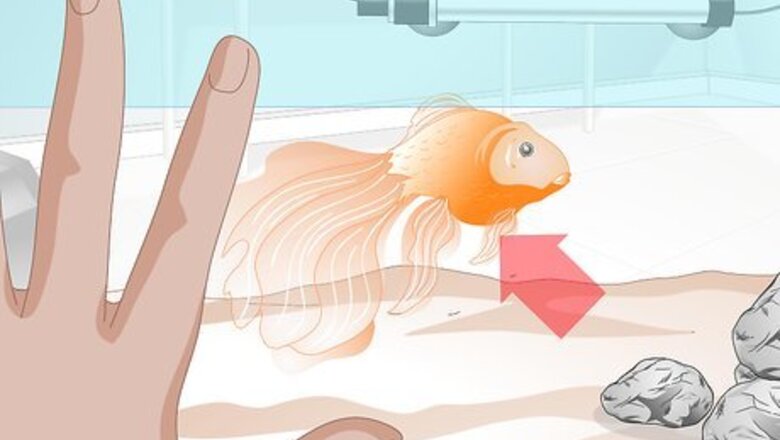
views
Diagnosing the Ailment
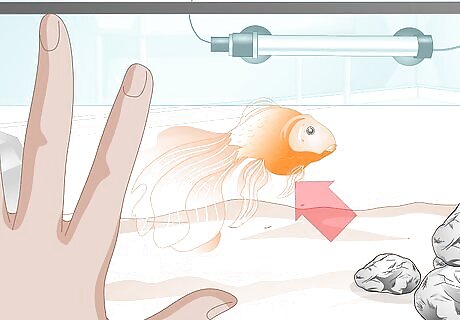
Watch for bloat. Dropsy is a build-up of fluids inside the goldfish. Thus, the first signs of dropsy will be general bloating. Look for any unusual increase in size of the goldfish. Treating the goldfish at this early stage presents the best chance of saving the goldfish.
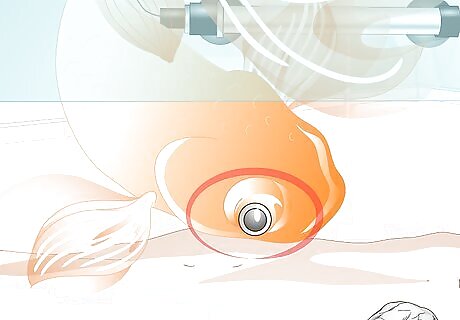
Look for bulging eyes. Beyond the initial bloating, fluid build-up begins at the goldfish’s head. As fluid builds up under the goldfish’s eyes, they will start to bulge out.
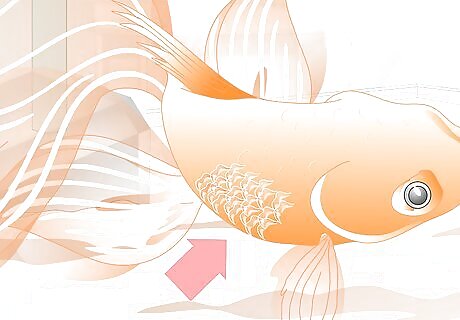
Notice distended scales. This is the classic symptom of dropsy. As fluid build up moves down the goldfish’s body, its scales will start to rise up from its body. When the fluid build-up has progressed through the goldfish’s whole body, it will look like an opened pinecone. Pearlscale goldfish are sometimes mistakenly diagnosed with dropsy because their scales naturally have a raised bump in the middle. A Pearlscale goldfish likely only has dropsy if its scales are far more raised than usual. Once a goldfish has reached this change it is usually not savable. However, it doesn’t hurt to treat the symptoms and try to cure the underlying disease.
Treating the Symptoms
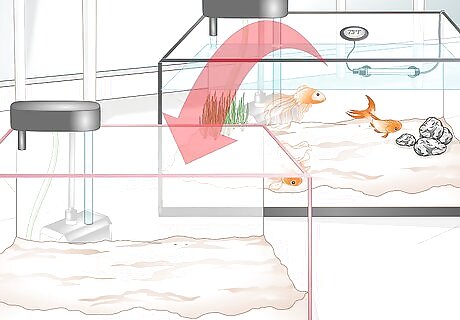
Isolate the sick goldfish. Dropsy—and its underlying causes—are not contagious. However, the conditions a goldfish needs to recover from dropsy are different than the normal ideal conditions of an aquarium. A second tank of similar size can serve as the goldfish’s sickbay. Perfect conditions must be maintained for the goldfish’s immune system to have the best chance to recover.

Fill the tank with fresh water. The water should start out at the same temperature as the water in the goldfish’s original tank. This will prevent the goldfish from going into shock in its new environment.
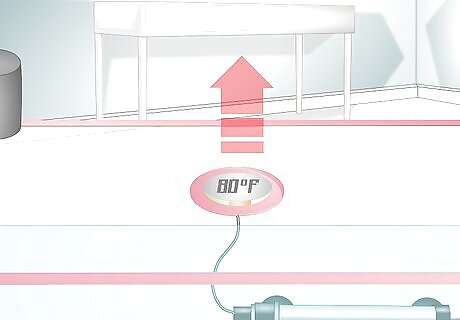
Slowly raise the water temperature. The ideal water temperature for a goldfish with dropsy is 80 degrees Fahrenheit. A relatively high water temperature will prevent bacteria from multiplying. Raise the temperature in the tank by a two degrees every hour until it reaches 80 degrees Fahrenheit. Use an adjustable aquarium heater so you control the rate of temperature increase.
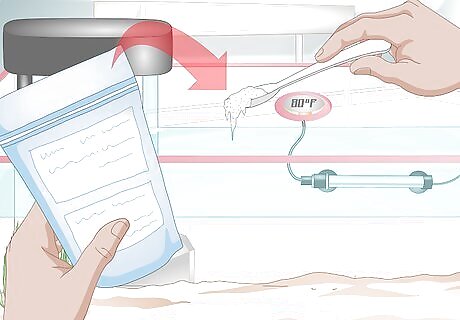
Add Epsom salt. The kidney’s function is to keep the fish’s internal salt levels balanced with the salt levels in the water. When the kidneys shut down, salt builds up in the goldfish. Increasing the salinity of the tank helps the goldfish to stay in equilibrium with its environment—which will boost the goldfish’s immune system. Add 2.5 teaspoons of Epsom salt per 10 gallons of water. Don’t add too much salt. A high level of salinity will put even more stress on the goldfish’s kidneys.
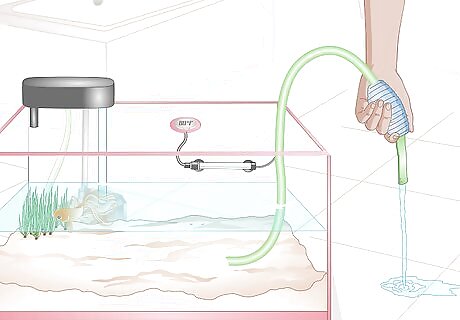
Change the water frequently. The goal is to keep the goldfish in perfect, clean conditions while it recovers from dropsy. Changing the water on a regular basis will help achieve this goal. Aim to change the water once every three days. Remember to slowly increase the temperature and add salt to the new water.
Curing the Disease
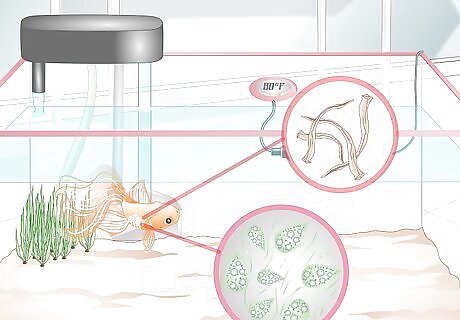
Realize dropsy has many causes. Dropsy is a symptom of many goldfish diseases. It can be caused by bacterial infections, parasitical infections, toxins, and kidney cysts. There is no way to know the cause of a particular goldfish’s dropsy. Only the first two causes—bacterial infections and parasitical infections—can be treated. Since there’s no way to know the cause of dropsy, it makes sense to provide all available treatments.
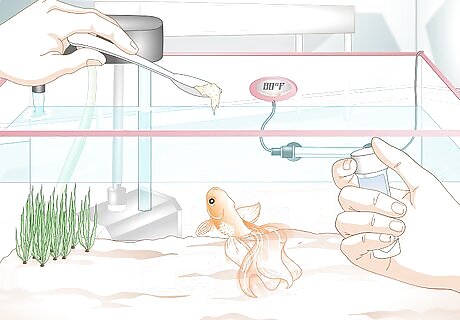
Treat any bacterial infection. There are two antibiotic treatments available for treating bacterial infections in goldfish—Kanaplex and Kanamycin. They each target different bacteria, so its important to start with one, check for improvement, and move onto the other. Add thirty-six milligrams of Kanaplex per gallon of water to the tank. Continue the treatment for seven days. Watch the goldfish for signs of improvement such as decreased bloating, more active swimming, and increase eating. If you don’t notice any improvement, move on to Kanamycin. Add two-hundred milligrams of Kanamycin per gallon of water to the tank. Continue the treatment for seven days and watch for improvement. You can purchase Kanaplex and Kanamycin at any pet store that sells fish. If you don’t have a pet store nearby, both antibiotics are available online. There are also antibacterial fish foods you can feed to your goldfish to help it get better.
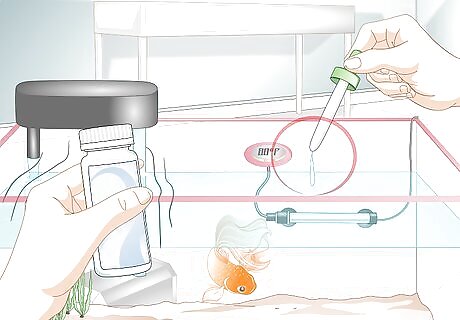
Treat any parasitical infection. There is no well-established treatment for parasitical infections. However, liquid praziquantel has shown some promise. In any case, it won’t hurt to try. Shake the bottle of liquid praziquantel vigorously. Add two-hundred milligrams of praziquantel per gallon to the tank. Continue the treatment for seven days and watch for improvement. Praziquantel is available at most pet stores that sell fish. It’s also available at online retailers.
Returning the Goldfish to its Aquarium

Watch for signs of recovery. If the goldfish has become more active and less bloated, wait three weeks to ensure the change represents real recovery from dropsy. If the positive change continues, it’s time to return the goldfish to its home tank.

Slowly reduce the water salinity. Over the course of three water changes—approximately nine days—reduce the water salinity by 1/3 of a teaspoon. At the third water change, do not add any salt.
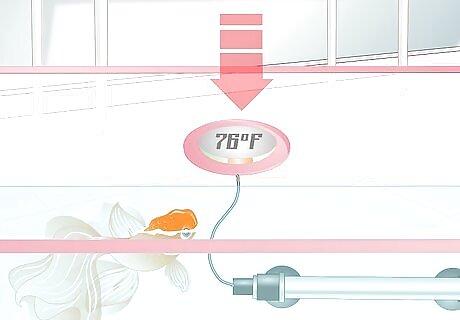
Slowly reduce the water temperature. Over a period of hours, reduce the water in the isolation tank to the temperature in the tank where the goldfish will be returned. This will acclimate the goldfish to the new temperature so it doesn’t go into shock.
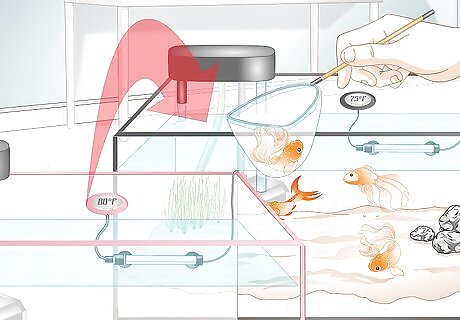
Return the goldfish to its home tank. To help prevent future outbreaks of dropsy, perform regular water changes and ensure that the water temperature does not fluctuate more than a few degrees during the day.


















Comments
0 comment